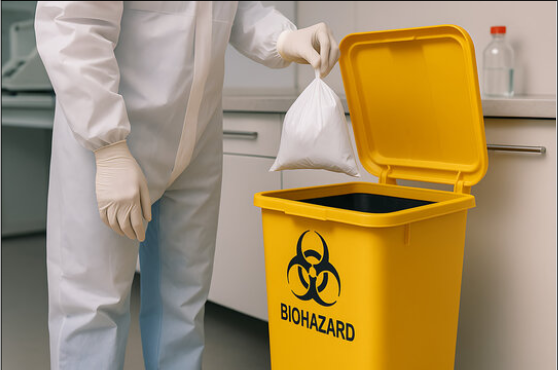Healthcare Waste Management: Protecting People and the Planet

Proper healthcare waste management is a critical component of any functioning medical system. It protects public health, prevents environmental contamination, and ensures compliance with local and federal regulations. From hospitals and dental clinics to nursing homes and laboratories, every healthcare facility generates waste that must be handled responsibly. In an era where safety, sustainability, and regulatory compliance are more crucial than ever, the systems and solutions for healthcare waste management have undergone significant evolution.
Why Healthcare Waste Management Matters
Healthcare facilities generate a wide range of waste, some of which can pose serious risks to both humans and the environment if not managed properly. This includes used syringes, contaminated PPE, infectious materials, expired pharmaceuticals, and even radioactive materials in some cases.
Improper disposal can lead to the spread of infections, exposure to toxic substances, and contamination of soil and water. Effective healthcare waste management ensures that every type of medical waste, no matter how hazardous, is collected, treated, and disposed of using methods that meet safety standards and legal requirements.
Types of Medical Waste and How They're Managed
A robust healthcare waste management program begins by identifying and categorizing waste properly. Each type requires a different handling and disposal method to ensure safety and compliance.
1. Regulated Medical Waste
This includes items like used gloves, gauze, bandages, and non-sharp instruments that have come into contact with bodily fluids. These materials are treated using techniques like autoclaving—a high-pressure steam sterilization method—or incineration, which destroys pathogens and reduces waste volume. Facilities that manage medical waste disposal use sealed containers and scheduled pickups to maintain a clean and compliant environment.
2. Biohazard Waste
Biohazardous waste involves any waste contaminated with infectious agents, such as lab cultures, contaminated PPE, or materials from isolation units. The key to handling biohazard waste is containment and separation. Special red bags and puncture-resistant containers are used, followed by safe and regulated disposal processes to prevent cross-contamination and exposure to healthcare workers and the general public.
3. Chemotherapy Waste
Chemotherapy waste includes IV bags, vials, gloves, and gowns that have been exposed to cytotoxic drugs. These substances can be highly toxic and require high-temperature incineration to ensure complete destruction. Providers of chemotherapy waste disposal follow strict guidelines set by NIOSH and the EPA to ensure safety and compliance.
4. Sharps Waste Management
Sharps waste, including needles, syringes, scalpels, and lancets, poses one of the highest risks in healthcare settings. Improper disposal can lead to accidental needlestick injuries and the transmission of bloodborne diseases. To prevent this, healthcare waste management companies provide OSHA-compliant sharps containers that are puncture-proof and labeled clearly. Once collected, sharps are disposed of through incineration or sterilization, eliminating all potential hazards.
5. Pathological Waste
Pathological waste refers to human tissues, organs, or body parts removed during surgical procedures or autopsies. This waste is highly sensitive and must be treated with strict biohazard protocols. Incineration is the most commonly used method, as it ensures the complete destruction of all organic matter and reduces the risk of exposure to pathogens.
6. Pharmaceutical Waste
Expired or unused medications can be dangerous if they enter the wrong hands or contaminate the environment. Pharmaceutical waste management involves the safe collection and disposal of controlled substances, non-hazardous drugs, and hazardous pharmaceuticals. Waste disposal companies follow DEA and EPA regulations to ensure proper containment, transport, and destruction, minimizing risks to both people and ecosystems.
7. Biomedical Waste
Biomedical waste covers a broad category, including both infectious and non-infectious waste from healthcare services. This may consist of blood-soaked materials, swabs, or surgical drapes. Effective biomedical waste disposal emphasizes the safe segregation, packaging, labeling, and final disposal of waste using sustainable methods to protect public health and minimize environmental impact.
8. Hazardous Waste
Certain chemicals, solvents, or devices like mercury thermometers fall under hazardous waste. Proper classification and containment are essential. Trained professionals utilize EPA-approved techniques to neutralize or incinerate hazardous materials safely. Mismanagement of these substances can lead to toxic spills, contamination, or regulatory penalties.
Final Thoughts
Whether you're dealing with sharps, biohazards, or expired medications, having a reliable disposal process in place is non-negotiable. In states like Virginia, where environmental regulations are taken seriously, working with certified professionals is the best path forward. If you're searching for trusted medical waste disposal in Virginia, make sure the provider you choose is experienced, fully compliant, and committed to safe and sustainable waste solutions. Your patients, staff, and community deserve nothing less.
- Art
- Causes
- Crafts
- Dance
- Drinks
- Film
- Fitness
- Food
- Игры
- Gardening
- Health
- Главная
- Literature
- Music
- Networking
- Другое
- Party
- Religion
- Shopping
- Sports
- Theater
- Wellness



